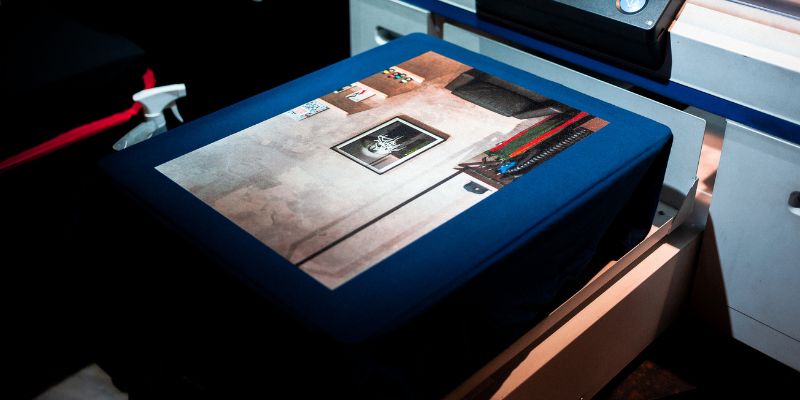Starting a printing business can entice entrepreneurs looking to tap into the creative and marketing industries. However, like any business, success hinges on various factors, such as market demand, competition, and cost management. In this article, we’ll dive deep into the question, “Can a printing business be profitable?” and explore the potential of this industry.
Can a Printing Business be Profitable?
A printing business can be profitable, but achieving success requires strategic planning, high-quality services, and customer satisfaction. A printing business can carve its niche and thrive by catering to the right market, offering competitive pricing, and staying ahead of industry trends.
Understanding the Printing Industry
The printing industry encompasses various services, including commercial, digital, packaging, and more. Each segment presents unique opportunities and challenges for entrepreneurs. By understanding the demands of different printing services, business owners can tailor their offerings to meet customer needs effectively.
The Rising Demand for Custom Printing
Customization has become a significant trend in the printing industry. From personalized merchandise to tailor-made marketing materials, customers now seek unique and eye-catching designs. Embracing technology and investing in advanced printing equipment can enable businesses to cater to this growing demand for customization.
Overcoming the Challenges
While the printing industry offers ample opportunities, it also comes with challenges. Staying relevant in the digital age, managing printing costs, and tackling environmental concerns are hurdles businesses must overcome. Implementing sustainable practices and adopting eco-friendly materials can help address these challenges and appeal to environmentally conscious customers.
Finding Your Target Market
Identifying the right target market is crucial for a profitable printing business. Whether catering to small businesses, corporate clients, or individual consumers, understanding your customer’s needs and preferences is key to delivering successful printing solutions.
Building Your Printing Infrastructure
Investing in the right printing equipment and infrastructure is vital for delivering high-quality results. Depending on your target market and printing services, you may need offset printers, digital presses, large format printers, or specialty printing machines. Ensuring the maintenance and efficiency of your equipment can contribute to cost-effectiveness and customer satisfaction.
Embracing Digital Printing Advancements
Digital printing has revolutionized the industry, offering faster turnaround times, reduced setup costs, and variable data printing capabilities. By embracing digital printing advancements, businesses can enhance efficiency, expand service offerings, and cater to time-sensitive projects.
Navigating Pricing Strategies
Pricing plays a critical role in determining profitability. Striking the right balance between affordability and maintaining profit margins is essential. Conducting a competitive analysis, understanding industry pricing norms, and offering transparent pricing options can help attract customers while ensuring profitability.
Leveraging E-commerce Platforms
In the digital era, e-commerce platforms have become indispensable for businesses. Establishing an online presence through a user-friendly website and integrating e-commerce functionalities can open new avenues for reaching a broader audience and driving sales.
Establishing Strong Customer Relationships
Building long-lasting customer relationships is crucial for a thriving printing business. Offering exceptional customer service, timely communication, and addressing customer feedback can instill trust and loyalty, leading to repeat business and positive word-of-mouth marketing.
Incorporating Marketing and Design Services
Printing businesses can differentiate themselves from traditional printing services by providing design and marketing solutions in a highly competitive market. Collaborating with graphic designers, providing creative consultations, and offering value-added services can elevate the overall customer experience.
Implementing Quality Control Measures
Maintaining consistent quality is vital for customer satisfaction and a strong reputation. Implementing rigorous quality control measures, adhering to industry standards, and conducting regular checks can ensure that every printed product meets high-quality standards.
Diversifying Product Offerings
In a rapidly evolving market, diversifying product offerings can be a smart move for printing businesses. Introducing new products and services that align with customer preferences and industry trends can open additional revenue streams and keep the business competitive.
Staying Ahead of Technology Trends
Staying ahead of the latest trends as technology advances can give a printing business a competitive edge. From 3D printing to augmented reality-enhanced print materials, embracing cutting-edge technologies can attract tech-savvy customers and generate buzz around the brand.
Exploring Green Printing Practices
With environmental consciousness on the rise, incorporating green printing practices can appeal to customers. Using recycled materials, eco-friendly inks, and energy-efficient equipment can demonstrate a commitment to sustainability and attract eco-conscious clientele.
Promoting Social Responsibility
Engaging in social responsibility initiatives can benefit communities and enhance the brand’s reputation. Participating in local events, supporting charitable causes, and championing social causes can create a positive image for the printing business.
Leveraging Social Media for Marketing
In the age of social media, leveraging these platforms for marketing and brand promotion is essential. Creating engaging content, running targeted ad campaigns, and fostering a strong online community can expand the business’s reach and drive customer engagement.
Implementing Efficient Workflow Processes
Streamlining workflow processes is crucial for operational efficiency and timely project completion. From order processing to print production and delivery, optimizing each step can reduce costs and enhance customer satisfaction.
Investing in Employee Training and Development
Skilled and knowledgeable employees are valuable assets for any printing business. Investing in employee training and development can improve service quality and boost employee morale, leading to increased productivity.
Analyzing Competitors and Industry Trends
Keeping an eye on competitors and industry trends is essential for staying relevant and competitive. Analyzing competitors’ offerings, pricing, and marketing strategies can provide valuable insights for making informed business decisions.
Providing Exceptional Customer Support
Outstanding customer support can set a printing business apart from its competitors. Promptly addressing customer inquiries, resolving issues, and going the extra mile to meet customer needs can foster trust and loyalty.
Embracing New Marketing Strategies
Traditional marketing methods may still be effective, but embracing new strategies can yield better results. From influencer marketing to content marketing and video promotions, exploring innovative marketing channels can attract a wider audience.
Expanding into New Markets
Once a printing business establishes itself in its local market, expanding into new territories can present exciting growth opportunities. Conducting market research, understanding cultural differences, and tailoring services to suit regional preferences can aid successful expansion.
Adapting to Industry Disruptions
The printing industry, like any other, is susceptible to disruptions. Embracing change, adapting to technological advancements, and anticipating industry shifts can help printing businesses weather challenges and seize new opportunities.
FAQs:
Q: How long does it take to see profits in a printing business?
A: The time to see profits can vary based on market demand, competitive landscape, and marketing efforts. Some businesses start seeing profits within a few months, while others may take longer.
Q: Is the printing industry declining due to digitalization?
A: While digitalization has impacted the printing industry, it has yet to render it obsolete. The industry has adapted by embracing digital printing and offering services that cater to modern needs.
Q: How can I market my printing business effectively?
A: Utilize online platforms, social media, and networking opportunities to market your printing business. Providing high-quality samples and discounts to first-time customers can also attract new clients.
Q: Are there any certifications required to start a printing business?
A: Certifications may vary depending on your location and the specific printing services you offer. Check with local authorities and industry associations for any necessary certifications.
Q: Can I run a printing business from home?
A: Running a printing business from home is possible, especially for digital and small-scale operations. However, ensure compliance with zoning laws and local regulations.
Conclusion
Starting and running a profitable printing business is attainable with the right strategies, dedication, and customer focus. Entrepreneurs can carve a successful path in the printing industry by understanding market demands, embracing technology, and providing top-notch services. Remember, staying adaptable, investing in quality, and prioritizing customer satisfaction is essential to thrive in this competitive market.


